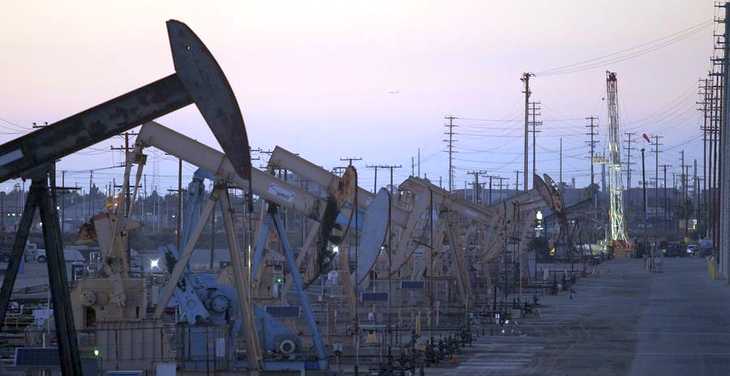Predicting where oil prices would go next month or next year has always been a game of hit and miss, all the more so in the past two years since the oil price crash began.
Analysts have forecast prices in the range US$10 to US$70 at various points this year, and actual prices have also had a bumpy ride, with WTI Crude ranging from below US$30 in January 2016 to a 17-month high briefly touching over US$55 on December 12, 2016, writes oilprice.com.
Heading into 2017, the oil price predictions by major organizations and investment banks are generally not widely diverging and hovering in the US$50-$60 range, but there have been some wilder viewpoints that are phenomenally bullish or direly bearish.
In February of this year, when WTI was just over US$31, Brandon Blossman at Tudor Pickering Holt & Co said he expected oil at US$70 by the end of the year, and at US$90 by the end of next year, commenting on the Colliers International Trends 2016 Commercial Real Estate Market Update, as quoted by Houston Agent Magazine.
This prediction came less than a month after Standard Chartered had said it expected oil to hit a low of US$10 this year, a level not seen since 1998.
Both forecasts missed by miles. By June this year, prices had touched US$50, but not much more.
It was in June that Raymond James’ Senior VP Pavel Molchanov said that global inventories would reverse their growth and start declining in the second half of the year and accelerate the decline in 2017. Raymond James forecast WTI at US$75 in the first quarter next year and at US$80 in the fourth quarter of 2017.
Six months later, with oil trading 20-ish-dollars below the Raymond James forecast, Molchanov continues to be bullish on oil after the OPEC deal to curtail output. On 30 November, he said that with global demand “quite strong” and “in very good shape”, oil prices in 2017 have to be “meaningfully higher, even after the recent rally, to support a more sustainable level of investment”.
In a Reuters poll of 29 analysts and economists carried out after the OPEC deal, Raymond James had the highest 2017 forecast for Brent price, at US$83 per barrel, while the poll saw Brent averaging US$57.01 next year.
On the opposing side is Shawn Driscoll, portfolio manager at the T. Rowe Price New Era fund, who told Barrons.com earlier this month that “we’re in a secular bear market for oil”, expected to go on for 10 to 15 years.
Most of the other projections in the past month or two—prompted by the pending OPEC deal and then the cartel’s agreement to cut output–have not only talked oil prices up, but made more analysts optimistic that an agreement would speed up the drawdown of the global oil glut. The market is likely to move into deficit in the first half next year by an estimated 600,000 bpd, said the International Energy Agency (IEA), as long as OPEC and non-OPEC producers manage to (and are willing to) stick to promised cuts.
More than a month before the deal was announced, the World Bank raised its oil price forecast for 2017 to average US$55 next year, or US$2 more than its earlier forecast.
At oil above US$55 next year, energy consultancy Wood Mackenzie sees the oil and gas industry turning cash flow positive for the first time since the downturn, and expects 2017 will be a year of “stability and opportunity” for the sector.
In its latest Short-Term Energy Outlook from December 6, the U.S. Energy Information Administration (EIA) expects Brent Crude prices to average US$51.66 in 2017, with WTI Crude prices averaging US$50.66 next year.
However, EIA warned: “The values of futures and options contracts indicate significant uncertainty in the price outlook.”
BofA Merrill Lynch – one of the optimistic viewpoints among the investment banks – said in its 2017 Market Outlook that its forecast for WTI Crude is US$59 and Brent – at US$61. BofA Merrill Lynch also factors in a rebound of the U.S. shale patch in its price projections.
“Pricing forecasts embed a sequential 500,000 barrel-per-day increase in U.S. crude production, raising domestic output to 9.2 million barrels a day by the end of 2017,” the bank said.
As always, the game of predicting oil prices will have its winners and losers next year, too. But 2017 has some major wildcards for oil prices in store, including, but not limited to: Would OPEC stick to promised cuts? Would those cuts rebalance the market at some point next year? Even if they start the year with sticking to cuts, would some OPEC and non-OPEC producers start cheating and renege on pledges once they see more revenues at higher oil prices and be tempted to get more revenue? How fast U.S. shale would rebound? How would this affect global supply and oil prices? How would OPEC react to the U.S. shale resurgence?
Let the game begin, and beware of projections, which range from $10 to $90.
